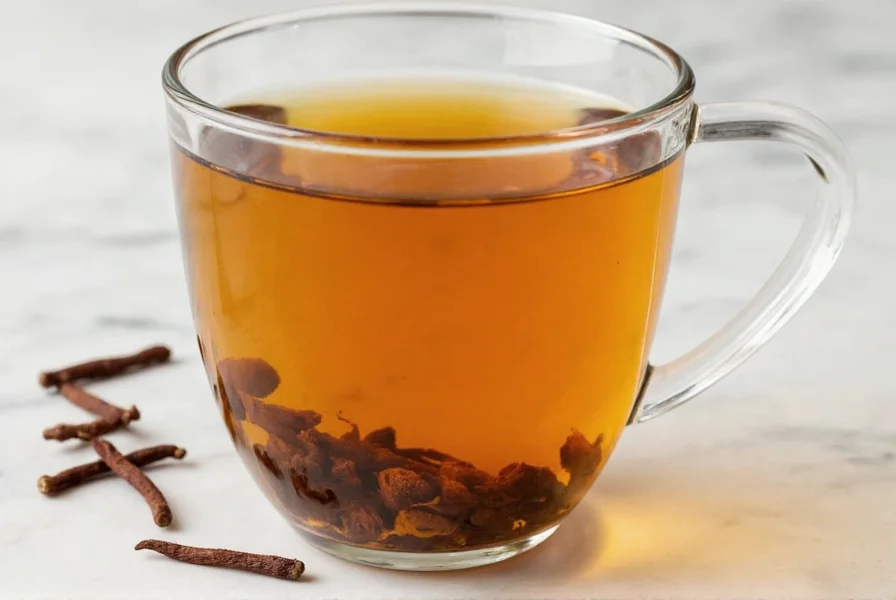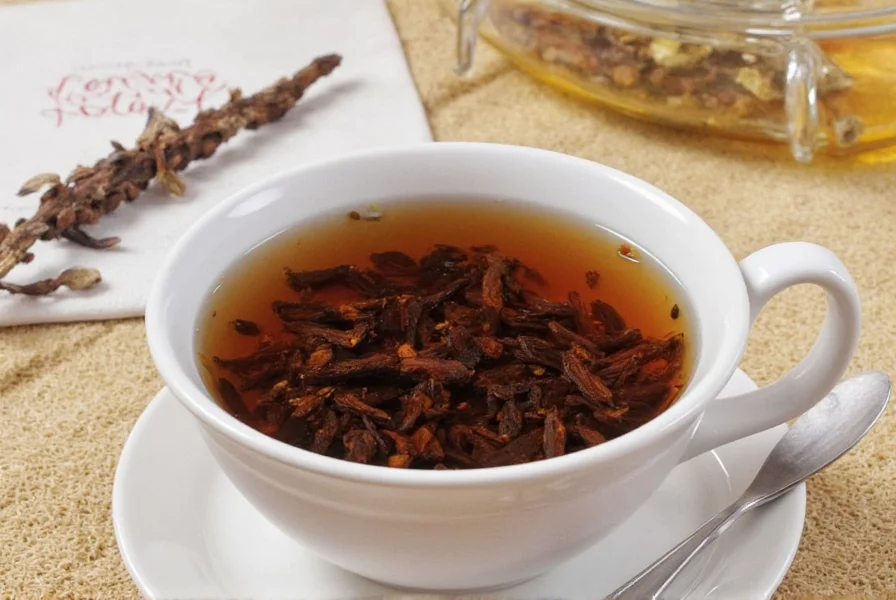Here's a simple clove tea recipe: Simmer 5-6 whole cloves in 2 cups of water for 10-15 minutes. Strain, then add honey or lemon to taste. This basic preparation yields a warming, aromatic beverage with a spicy-sweet flavor profile perfect for cold days or as a soothing evening drink.
The Complete Guide to Making Perfect Clove Tea at Home
Clove tea has been enjoyed for centuries across various cultures for its distinctive warm, spicy flavor and comforting properties. This simple herbal infusion requires minimal ingredients but delivers maximum flavor. Whether you're seeking a caffeine-free alternative to traditional teas or want to explore traditional beverage preparations, this authentic clove tea recipe provides everything you need to create a perfect cup.
Why Clove Tea Deserves a Place in Your Tea Collection
Clove tea stands out among herbal infusions with its unique flavor profile that combines warmth, sweetness, and subtle spiciness. The essential oil eugenol gives cloves their characteristic aroma and taste, creating a tea that's both invigorating and soothing. Many tea enthusiasts appreciate clove tea as a versatile base that pairs beautifully with other spices like cinnamon, ginger, and cardamom.
When preparing traditional clove tea, the quality of your ingredients significantly impacts the final result. Whole cloves generally produce a more robust flavor than ground cloves, which can become bitter if over-steeped. This simple clove tea recipe uses whole spices to extract the optimal flavor without bitterness.
Essential Ingredients for Authentic Clove Tea
| Ingredient | Amount | Preparation Notes |
|---|---|---|
| Whole cloves | 5-6 pieces | Fresh, aromatic cloves yield best flavor |
| Water | 2 cups (16 oz) | Freshly filtered preferred |
| Honey | 1-2 tsp | Optional sweetener |
| Lemon slices | 1-2 | Optional for brightness |
Step-by-Step Clove Tea Preparation Method
Follow this straightforward preparation method for the best results when making clove tea at home. The key to perfect clove tea lies in the simmering process, which extracts the essential oils without creating bitterness.
- Measure 2 cups of fresh water into a small saucepan
- Add 5-6 whole cloves to the cold water
- Bring to a gentle simmer over medium heat (do not boil vigorously)
- Reduce heat to low and let the cloves simmer for 10-15 minutes
- Remove from heat and strain into your teacup
- Add honey or lemon to taste, if desired
For a stronger flavor, extend the simmering time up to 20 minutes, but avoid exceeding this as cloves can become bitter. The ideal clove tea preparation method balances extraction time to capture the spice's aromatic compounds without releasing excessive tannins.

Popular Clove Tea Variations to Try
Once you've mastered the basic clove tea recipe, experiment with these delicious variations that build upon the foundational preparation method:
- Clove Ginger Tea Recipe: Add 3-4 thin slices of fresh ginger along with the cloves for a warming, digestive-friendly beverage
- Spiced Masala Tea: Combine cloves with 2 cardamom pods, 1 cinnamon stick, and a small piece of star anise for an authentic Indian-inspired blend
- Clove Mint Tea: Steep fresh mint leaves with the cloves for the last 5 minutes of preparation for a refreshing twist
- Clove Citrus Tea: Add orange or lemon zest during the last 5 minutes of simmering for a bright, citrusy note
Serving and Storage Recommendations
Serve your freshly prepared clove tea immediately for the best flavor experience. The aromatic compounds begin to dissipate shortly after preparation, so timing matters. For optimal enjoyment, pour the hot tea into a pre-warmed cup to maintain temperature.
If you have leftovers, store cooled clove tea in an airtight container in the refrigerator for up to 3 days. Reheat gently on the stove (not in a microwave) to preserve flavor integrity. Avoid reheating multiple times, as this degrades the delicate spice notes.

Frequently Asked Questions About Clove Tea
How long should I steep cloves for tea?
For optimal flavor extraction without bitterness, simmer whole cloves in water for 10-15 minutes. Extended simmering up to 20 minutes creates a stronger tea, but exceeding this timeframe may result in a bitter taste due to over-extraction of compounds.
Can I use ground cloves instead of whole cloves for tea?
While whole cloves produce the best flavor, you can use ground cloves in a pinch. Use 1/4 teaspoon of ground cloves per cup of water and steep for no more than 5-7 minutes. Ground cloves extract more quickly and can become bitter if over-steeped, so monitor carefully.
What are the traditional uses of clove tea?
Clove tea has been traditionally prepared across various cultures as a soothing beverage, particularly during cold weather. Many cultures incorporate clove tea into their culinary traditions as a flavorful, caffeine-free alternative to standard teas, often enjoying it after meals for its distinctive warm, spicy notes.
How does clove tea taste compared to other herbal teas?
Clove tea offers a uniquely warm, spicy-sweet flavor profile with subtle peppery notes. Compared to milder herbal teas like chamomile or mint, clove tea delivers a more robust, complex taste that many describe as both invigorating and comforting. The distinctive aroma comes from eugenol, the essential oil in cloves.
Can I make iced clove tea using this recipe?
Absolutely. Prepare the clove tea using the standard recipe, then let it cool to room temperature before refrigerating. For best results with iced clove tea, make a slightly stronger concentrate (use 8 cloves for 2 cups water) as ice will dilute the flavor. Serve over ice with a lemon slice for a refreshing summer beverage.











 浙公网安备
33010002000092号
浙公网安备
33010002000092号 浙B2-20120091-4
浙B2-20120091-4